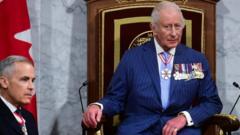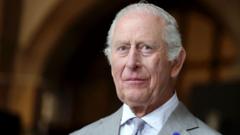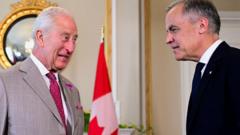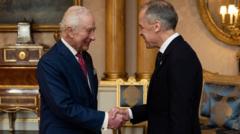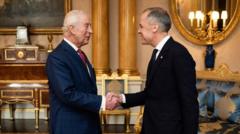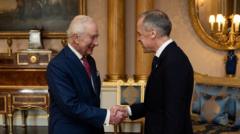The decision marks the end of a historic chapter linking British royals from Queen Victoria to King Charles III.
**The End of an Era: Britain's Royal Train Set to Retire**

**The End of an Era: Britain's Royal Train Set to Retire**
The iconic royal train, a symbol of British monarchy for over 150 years, will be retired as part of Buckingham Palace's cost-cutting measures.
The beloved royal train, which has served as the private transportation of the British monarchy since Queen Victoria's era, is being retired due to ongoing financial constraints at Buckingham Palace. After over 150 years in service, this luxurious means of travel utilized by the royals is set to make its final journey as part of a broader cost-cutting initiative.
The tradition began in June 1842 when Queen Victoria, initially hesitant about the new mode of transport, experienced train travel. She later expressed her positive thoughts about the journey in her journal, highlighting the comfort and speed of train travel compared to horse-drawn carriages. Victoria was convinced to embrace this innovation by her husband, Prince Albert, who recognized the importance of this mode of transport for royal duties and engagements.
In 1869, Victoria commissioned the creation of specially designed rail cars, adorned with lavish decorations of gold and silk, symbolizing the wealth and grandeur of the monarchy. These ornate coaches facilitated countless royal journeys, from official visits and state events to family honeymoons. Despite their luxury, Victoria controversially opted not to dine on board, convinced that eating while traveling could harm her health.
As the royal train prepares to exit the stage, it signifies more than just a change in transportation; it reflects a shift in the historical legacy of the British monarchy. The service has been a vital connection through generations of royal families, embodying the evolution of the monarchy in an increasingly modern world.
The transition away from this esteemed tradition may save costs for the royal family, but it represents a poignant departure from a time when rail travel was synonymous with sophistication and royal privilege. While the modern monarchy adapts to contemporary financial realities, the departure of the royal train leaves an indelible mark on Britain's royal heritage.
The tradition began in June 1842 when Queen Victoria, initially hesitant about the new mode of transport, experienced train travel. She later expressed her positive thoughts about the journey in her journal, highlighting the comfort and speed of train travel compared to horse-drawn carriages. Victoria was convinced to embrace this innovation by her husband, Prince Albert, who recognized the importance of this mode of transport for royal duties and engagements.
In 1869, Victoria commissioned the creation of specially designed rail cars, adorned with lavish decorations of gold and silk, symbolizing the wealth and grandeur of the monarchy. These ornate coaches facilitated countless royal journeys, from official visits and state events to family honeymoons. Despite their luxury, Victoria controversially opted not to dine on board, convinced that eating while traveling could harm her health.
As the royal train prepares to exit the stage, it signifies more than just a change in transportation; it reflects a shift in the historical legacy of the British monarchy. The service has been a vital connection through generations of royal families, embodying the evolution of the monarchy in an increasingly modern world.
The transition away from this esteemed tradition may save costs for the royal family, but it represents a poignant departure from a time when rail travel was synonymous with sophistication and royal privilege. While the modern monarchy adapts to contemporary financial realities, the departure of the royal train leaves an indelible mark on Britain's royal heritage.








